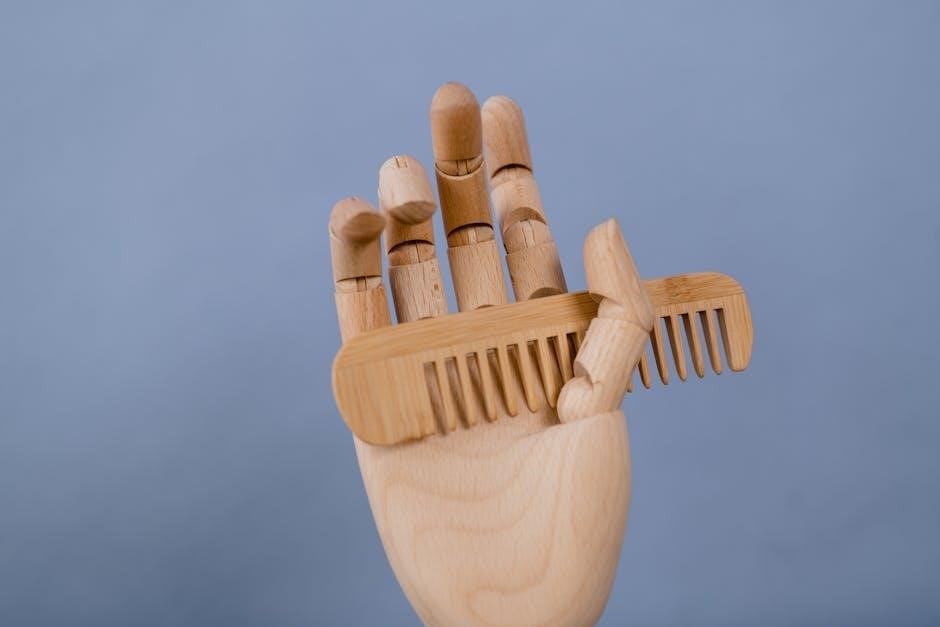The Weider Pro 6900 manual is a comprehensive guide providing essential information for safe and effective use of the weight system, including assembly, maintenance, and troubleshooting.
Overview of the Weider Pro 6900 Weight System
The Weider Pro 6900 is a versatile weight system designed for comprehensive home workouts. It features multiple exercise stations, allowing users to target different muscle groups efficiently. The system includes a range of weight adjustments and interchangeable parts, making it suitable for both beginners and advanced fitness enthusiasts. Its durable construction and ergonomic design ensure safe and effective training sessions. This weight system is ideal for those looking to build strength, improve flexibility, and achieve overall fitness goals in the comfort of their own home.
Importance of Reading the Manual
Reading the Weider Pro 6900 manual is crucial for safe and effective use of the equipment. It provides detailed instructions for assembly, operation, and maintenance, ensuring optimal performance. The manual highlights safety precautions to prevent injuries and equipment damage. By following the guidelines, users can maximize their workout experience and extend the system’s lifespan. Understanding the weight system’s capabilities and limitations is essential for achieving fitness goals without compromising safety. Always refer to the manual before starting any assembly or exercise routine.
Key Features of the Weider Pro 6900
The Weider Pro 6900 is a versatile weight system designed for comprehensive full-body workouts. It features multiple workout stations, including a bench press, leg developer, and lat pulldown, allowing for targeted muscle training. The system includes an adjustable weight capacity and interchangeable resistance levels to cater to various fitness goals. Durable construction ensures long-lasting performance, while safety features like secure weight locking mechanisms provide peace of mind. Its ergonomic design promotes comfort and proper form, making it ideal for both beginners and advanced users aiming to maximize their workout efficiency and results.

Assembly Instructions
Follow the step-by-step guide in the manual to assemble the Weider Pro 6900 properly, ensuring all parts are securely fastened. Tools and parts are listed for ease.
Download the full manual for detailed instructions.
Step-by-Step Assembly Guide
Begin by carefully unpacking all components and verifying the parts list. Start with the base frame, attaching the uprights securely; Next, assemble the weight stations, ensuring proper alignment. Install the press arms and pulley systems, tightening all bolts firmly. Attach the bench and leg developer, following the manual’s diagrams. Finally, connect the cables and test the system for smooth operation. Always refer to the manual for specific instructions and torque specifications to ensure a safe and functional setup.
Tools and Parts Required
To assemble the Weider Pro 6900, you’ll need essential tools like Allen wrenches, screwdrivers, and a torque wrench. Key parts include bolts, nuts, washers, and cables. Ensure all components from the box are accounted for, referencing the manual’s parts list. Safety gloves and eyewear are recommended for protection. Double-check the manual for specific torque specifications to avoid over-tightening; Organize parts by category to streamline assembly, and verify compatibility of tools with the provided hardware for a smooth setup process.
Common Assembly Mistakes to Avoid
When assembling the Weider Pro 6900, avoid missing parts by verifying all components against the manual’s list. Ensure proper alignment of bolts and cables to prevent mechanical issues. Over-tightening can damage frames, so follow torque specifications. Neglecting safety precautions, such as failing to secure moving parts, can lead to accidents. Misaligned cables or incorrect attachment of weight stations may cause malfunctions. Double-check each step to avoid errors, ensuring a safe and functional setup. Always refer to the manual for guidance to prevent common assembly oversight.

Using the Weider Pro 6900
The Weider Pro 6900 offers versatile weight stations for full-body workouts. Always follow safety guidelines, operate each station smoothly, and adjust settings for optimal performance and safety.
Understanding the Weight System
The Weider Pro 6900 features a comprehensive weight system designed for versatile workouts. It includes multiple stations for exercises targeting different muscle groups, with adjustable resistance settings. Users can customize their routines by selecting from various weight configurations. Proper understanding of the system ensures safe and effective use of each station. Always refer to the manual for guidance on weight limits, station operation, and safety precautions to maximize your workout experience and maintain equipment durability over time.
Operating the Weight Stations
Operating the Weider Pro 6900 weight stations involves selecting the appropriate weight settings and ensuring proper form during exercises. Each station is designed for specific muscle groups, offering a variety of workout options. Always adjust the resistance according to your fitness level and goals. Start with lighter weights to familiarize yourself with the equipment, then gradually increase the load as you build strength. Follow the manual’s guidelines for safe operation to avoid accidents and maximize the effectiveness of your workouts.
Adjusting the Equipment for Different Workouts
Adjust the Weider Pro 6900 to suit various exercises by modifying weight settings, seat positions, and cable tensions. Ensure the equipment aligns with your body for proper form. For strength training, increase resistance by adding weights. For toning, use lighter loads with higher repetitions. Adjust the bench and armrests to target specific muscle groups. Always refer to the manual for guidance on customizing the machine for optimal performance and safety during workouts.

Maintenance and Care
Regularly clean and lubricate moving parts of the Weider Pro 6900 to ensure smooth operation and longevity. Inspect for wear and tear to prevent damage.
Cleaning the Equipment
Regular cleaning is essential to maintain the Weider Pro 6900’s performance and longevity; Use a soft, damp cloth to wipe down frames, seats, and handles after each use. Avoid harsh chemicals or abrasive cleaners, as they may damage the finish. For tougher stains, a mild soap solution can be applied, but ensure the equipment is thoroughly rinsed and dried. Pay special attention to high-touch areas like grips and adjustment points. Cleaning prevents dirt buildup, reduces wear, and keeps the system hygienic for consistent workouts.
Lubricating Moving Parts
Regular lubrication of moving parts ensures smooth operation and extends the lifespan of your Weider Pro 6900. Use a high-quality silicone-based lubricant, applying it to hinges, pulleys, and cable systems every 3-6 months or when friction is noticed. Avoid over-lubrication to prevent dust buildup. Wipe off excess with a clean cloth. Do not lubricate electrical components or non-moving parts. Proper lubrication reduces wear, prevents rust, and ensures optimal performance during workouts.
Inspecting for Wear and Tear
Regularly inspect the Weider Pro 6900 for signs of wear and tear to ensure safety and performance. Check cables, pulleys, and frames for fraying, cracks, or corrosion. Tighten any loose bolts or screws immediately. Clean moving parts to prevent dust buildup, which can cause friction. Inspect weight plates and bars for damage or rust. Lubricate joints if squeaking occurs. Replace any worn or damaged components promptly to maintain functionality and prevent accidents. Consistent inspections help prolong the equipment’s lifespan and ensure reliable operation.

Troubleshooting Common Issues
Troubleshooting common issues with the Weider Pro 6900 involves identifying mechanical problems, resetting the system, and inspecting for damage. Refer to the manual for detailed solutions.
Identifying and Solving Mechanical Problems
Identifying mechanical issues with the Weider Pro 6900 involves checking for loose screws, misaligned parts, or damaged components. Common problems include weight stations not functioning properly or parts not fitting securely. To solve these, inspect the affected area, tighten any loose connections, and ensure proper assembly. If a part is damaged, refer to the troubleshooting section for repair or replacement instructions. Regular lubrication of moving parts can also prevent mechanical issues. Always follow the manual’s guidelines for safe and effective solutions.
Resetting the Weight System
To reset the Weider Pro 6900 weight system, first ensure all weights are securely locked in place and the machine is stable. Turn off any power sources if applicable. Locate the reset mechanism, typically found near the weight selector pins. Pull or press the reset button firmly to recalibrate the system. If electronic, unplug and wait 30 seconds before plugging back in. Test the system by lifting a light weight to confirm proper function. Always refer to the manual for specific reset procedures to avoid damage or injury.
Repairing or Replacing Damaged Components
If a part of the Weider Pro 6900 is damaged, inspect it thoroughly to identify the issue. For minor damage, such as worn-out cables or loose bolts, tighten or replace them using the tools listed in the manual. For major damage, like broken frames or malfunctioning pulleys, contact Weider customer service for genuine replacement parts. Always follow the manual’s instructions for disassembly and reassembly to ensure safety and proper function. Avoid using unauthorized parts to prevent further damage or voiding the warranty.

Safety Precautions
The Weider Pro 6900 manual emphasizes inspecting equipment before use, avoiding loose clothing, and keeping children away to ensure a safe workout environment and prevent accidents.
General Safety Guidelines

Always inspect the equipment for damage before use and ensure all parts are securely tightened. Wear proper workout attire, avoiding loose clothing that could get caught in moving parts. Keep children and pets away from the weight system while in use. Familiarize yourself with the emergency stop mechanism and ensure it is easily accessible. Never use the equipment if it is damaged or malfunctioning. Be aware of your surroundings and maintain a safe distance from others while exercising. Ensure all pins and levers are securely locked in place before starting your workout. Adhere to these guidelines for a safe and effective workout experience.
Weight Limits and Capacities
The Weider Pro 6900 has specific weight limits to ensure safe and effective use. The maximum weight capacity for the bar is 300 lbs, while the weight stacks are designed for up to 150 lbs each. Users should not exceed these limits to prevent damage or injury. Always check the manual for specific capacities for each part of the equipment. Adhering to these guidelines ensures optimal performance and longevity of the weight system. Exceeding the weight limits can lead to equipment failure or personal harm, so it is crucial to follow the recommended capacities strictly.

Emergency Stop Procedures
Familiarize yourself with the emergency stop procedures to ensure safe operation. Locate the emergency stop mechanism, typically a red handle or button, designed to halt the system immediately. Always clear the area around the equipment before stopping. If an accident occurs or the system malfunctions, pull the emergency stop to prevent further damage or injury. After stopping, carefully assess the situation and contact customer support if necessary. Regularly check the emergency stop functionality to ensure it operates smoothly when needed.

Accessories and Upgrades
Explore accessories like weight benches and resistance bands to enhance your workout. Upgrades can expand the system’s capabilities, ensuring compatibility and customizing your fitness experience effectively.
Recommended Accessories for the Weider Pro 6900
To maximize your workout experience, consider adding accessories like a weight bench for incline presses or a resistance band kit for added intensity. A floor mat can protect your flooring and reduce noise during use. Additionally, upgrading with a cable replacement kit or purchasing extra weight plates can enhance the system’s functionality. These accessories ensure compatibility and help you customize your fitness routine for optimal results while maintaining the durability of your equipment.
Upgrading the Weight System
Upgrading the Weider Pro 6900 weight system can enhance its performance and adaptability. Consider adding a cable replacement kit for smoother operation or extra weight plates to increase resistance. Ensure all upgrades are compatible with the existing framework to maintain safety and functionality. Follow the manual’s guidelines for proper installation to avoid damaging the equipment. Upgrades can extend the system’s lifespan and cater to advanced workout needs, providing a more challenging and versatile fitness experience over time.
Compatibility with Additional Equipment
The Weider Pro 6900 is designed to accommodate various accessories and upgrades, enhancing its versatility. Users can integrate additional equipment like weight benches, resistance bands, or cable extensions to expand workout options. Ensure all accessories are compatible with the system’s specifications to maintain safety and functionality. Always consult the manual or contact Weider customer support for guidance on compatible upgrades. This ensures optimal performance and prevents potential damage to the equipment.
The Weider Pro 6900 manual is a comprehensive guide that helps users navigate the equipment’s features, ensuring safe and effective workouts with proper maintenance routines.
Final Tips for Optimal Use
Familiarize yourself with the manual to ensure safe and effective workouts. Always adjust the equipment to fit your workout needs and maintain proper form. Regularly lubricate moving parts to prevent wear and tear. Start with lighter weights to build your routine and gradually increase intensity. Use protective gear like gloves and proper footwear for added safety. Finally, explore all workout stations to maximize your fitness experience and achieve your goals efficiently.
Long-Term Maintenance for Durability
Regularly clean the equipment using a damp cloth to remove dirt and sweat. Lubricate all moving parts every three months to ensure smooth operation. Inspect cables, pulleys, and frames for signs of wear and tear, replacing any damaged components promptly. Store the equipment in a dry, cool place to prevent rust. Follow the maintenance schedule outlined in the manual to extend the lifespan of the Weider Pro 6900 and maintain its performance for years to come.
Maximizing Your Workout Experience
To maximize your workout experience, ensure proper form and technique when using the Weider Pro 6900. Adjust resistance levels gradually to challenge muscles effectively without risking injury. Utilize the multiple stations to target different muscle groups, creating a well-rounded fitness routine. Incorporate variety by alternating exercises and focusing on both strength and endurance. Regularly review the manual for tips on optimizing workouts and achieving your fitness goals. Consistency and proper use will enhance your overall exercise experience with the Weider Pro 6900.

Additional Resources
Access the Weider Pro 6900 manual online, explore support forums, or contact customer service for further assistance and downloadable resources to enhance your fitness journey.
Downloading the PDF Manual
The Weider Pro 6900 manual is available for free download as a PDF from various online sources, including the official Weider website and support forums; Users can easily access the manual by searching for “Weider Pro 6900 PDF manual” or visiting the manufacturer’s official page. The PDF format allows for convenient viewing on computers, tablets, or smartphones, ensuring you always have the guide handy. It includes detailed instructions for assembly, maintenance, and troubleshooting, making it an essential resource for owners. Downloading the manual is a great way to ensure you have all the necessary information to optimize your workout experience and maintain your equipment properly.
Online Support and Forums
Weider Pro 6900 users can access online support and forums for additional assistance and community interaction. These platforms offer troubleshooting tips, user experiences, and expert advice. You can find solutions to common issues, learn new workout routines, and share feedback with other users. Online forums are a valuable resource for maximizing your fitness journey with the Weider Pro 6900, providing real-world insights and support to help you achieve your goals effectively.
Contacting Weider Customer Service
For assistance with the Weider Pro 6900, contact Weider customer service via phone, email, or through their official website. Their team is available to address questions, repair requests, or concerns. Visit the Weider website for contact details and support options. Ensure to have your model number and purchase information ready for efficient service. Customer support is a valuable resource for resolving issues and ensuring optimal performance of your Weider Pro 6900 weight system.






























